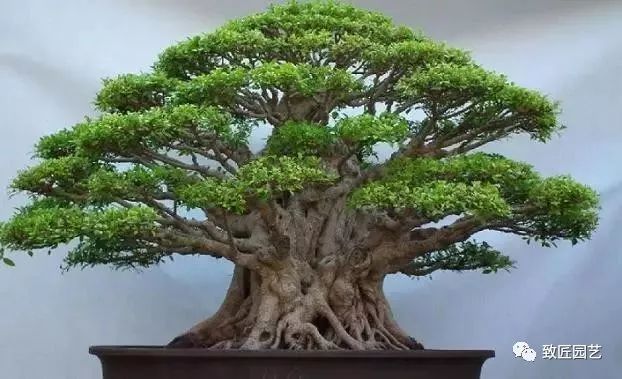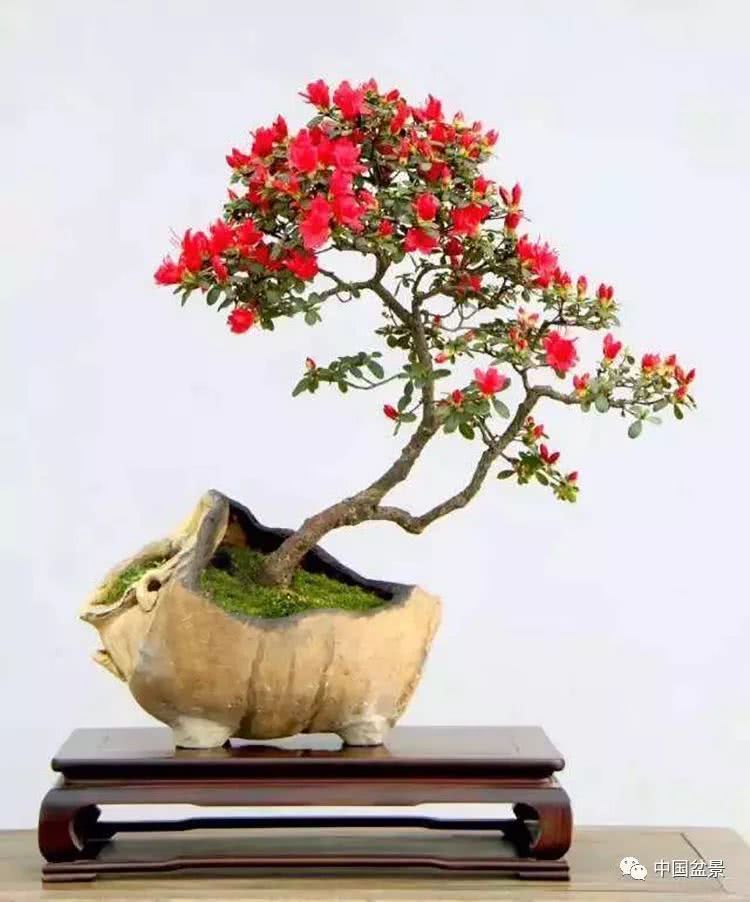Why are bonsai so expensive? just look at these shapes.

Bonsai, worth tens of thousands, hundreds of thousands, or even millions, are expensive in tree species, years and, most importantly, in shape. The shape of bonsai can be described as ever-changing, each faction has its own advantages, let the editor take you to see the strange shape of bonsai.
1 direct dry bonsai
Straight styling, the most common in bonsai, the advantage is that the trunk is upright, like a soldier standing military posture, full of masculinity, the disadvantage is relatively monotonous and dull, lack of dynamic, charm. The commonly used tree species are five-needle pine, Jiuli incense, golden pine, hammer elm, beech, Luohan pine, kapok and so on.
2 dry bonsai
The curved trunk is a winding trunk from the root to the top of the crown, the trunk is like a twisted wandering dragon, strong and soft, interesting, generally five-needle pine, June snow, elm and other more wayward tree species are more suitable to do. The shape of the young tree in 2-3 years is simpler. Common tree species are five-needle pine, real cypress, Luo Han pine, juniper cypress, stick stem begonia and so on.
3 oblique dry bonsai
Oblique dry bonsai, the trunk is tilted to one side, increasing the movement of bonsai, sparse shadow horizontal oblique, elegant and unrestrained, very simple and elegant. Commonly used tree species are five-needle pine, Luohan pine, hammer elm, Fujian tea, stick stem begonia, bottle orchid, sparrow plum, yellow poplar and so on.
4 water-facing bonsai
The trunk (dry body) is tilted to one side, and its angle is larger than that of the oblique dry type, but the trunk does not lie across the basin. The branches droop to the outside of the basin, but the degree of sagging does not exceed the basin line, as if facing the water and playing in the water.
The common water-facing tree species are black pine, Luohan pine, sparrow plum, yellow poplar, hammer elm, Tamarix, juniper, creeping cypress, five-needle pine and so on.
5 horizontal dry bonsai
The horizontal trunk tilts the trunk to one side or horizontally, so that the trunk is flattened.
Lying on the basin surface, it is as if the wild forest in the mountains has been blown down by the wind, such as Luohan sleeping on the ground, with a unique charm and unique style. Commonly used tree species are hammer elm, sparrow plum, Jiuli incense, creeping cypress, Chinese wolfberry and so on.
6 cliff style
Bend and droop to the outside of the basin to a large extent, like a dragon exploring the sea on a cliff. Those whose treetops do not hang beyond the basin floor are called small cliffs; those whose treetops hang beyond the basin floor are called big cliffs. Commonly used tree species are juniper, black pine, five-needle pine, hammer elm, Finch plum, Fujian tea, Luohan pine, creeping cypress, June snow, Acacia, mandarin, yellow poplar and so on.
7 double dry type
Double-dry bonsai is one of the common types of tree bonsai that people like. Relatively speaking, single-dry bonsai is more abstract and monotonous, while double-dry bonsai becomes lively because of the cross-reference between the two trees. Its "scenery" is more interesting and intuitive than single-dry trees.
8 jungle style
Many plants in a basin are planted in clusters, and artistic techniques are adopted to form pictures such as primeval forests, or quiet and elegant scenic forests. It is better to choose tree species with thin branches, dense leaves or shaped trees, such as tiger thorn, hammer elm, Fujian tea, June snow, pomegranate, chicken claw maple, red maple, five-needle pine, golden pine, Tamarix and so on.
9 split dry type
Split the trunk (dry body) into two or more parts from the center, each with roots and planted separately to form a split-dry bonsai. The split type is mostly used for stumps which are thick, long and straight, but not suitable for bending shape.
10 stone-attached type
The roots of trees are attached to the rocks and grow along gaps or holes, just like old trees growing naturally on the rocks, with the potential of "dragon claws grabbing stones", elegant and picturesque, with a variety of dry trees, either straight, oblique, or curved. Common tree species are triangular maple, five-needle pine, maple, papaya and begonia, black pine, juniper, elm, fish scale and so on.
11 lift root type
When potting or turning the basin or using other methods, the upper part of the root system is gradually raised to the soil surface, exposing the main and lateral roots of flat dragon and eagle claw. It mainly shows the beautiful shape of the root, like a dragon flat bend and an eagle's claw hanging high.
12 dry type
Dry type, also known as Kufeng type, the trunk is withered, the bark is mottled and shedding, revealing the xylem worn by erosion holes. Reflect the state of dead wood in spring and full of vitality.
Wonderful content
- Prev

A topic that 14 million people are talking about.
There is a kind of pain on the long road of ordering takeout that your mother is at home. Ordering takeout at home was the most exciting thing I ever did when my mother grabbed me when I ordered takeout. "isn't there something to eat at home?" "you have to order takeout!" "...
- Next

I wonder if you have this feeling? The artistic Life of Wang Shanfeng
Xu Hao Dujuan bonsai work "Golden years" [Bonsai people's perception] do you have this feeling? Writing | Wuhan, Hubei @ Zhang Xianjue recommended pictures | Erwa fell in love with bonsai, so people have less leisure and less city since then.
Related
- Wuhan Hospital Iron Tree Blooming Result Was Instantly Frightened by the Gardener Master
- Which variety of camellia is the most fragrant and best? Which one do you like best?
- What is the small blue coat, the breeding methods and matters needing attention of the succulent plant
- Dormancy time and maintenance management of succulent plants during dormancy
- Minas succulent how to raise, Minas succulent plant pictures
- What are the varieties of winter succulent plants
- How to raise succulent plants in twelve rolls? let's take a look at some experience of breeding twelve rolls.
- Attention should be paid to water control for succulent plants during dormant period (winter and summer)
- Watering experience of twelve rolls of succulent plants
- Techniques for fertilizing succulent plants. An article will let you know how to fertilize succulent plants.

